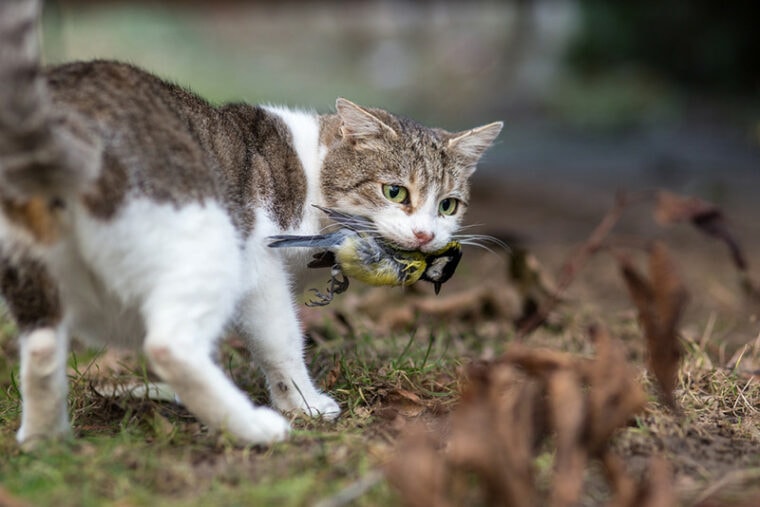
There are between 60 million to 100 million feral cats in the US. Trap, neuter, and return (TNR) programs were developed to reduce feral cat populations in a humane way. A popular TNR program that began in 1992 reported positive results that encouraged the funding and execution of more similar programs.
However, as more data has been collected over time, the results show that TNR programs may not be very effective in lowering the number of feral cats. Organizations and experts in the field have differing opinions on TNR programs. Having a proper understanding of TNR programs may help people find the most effective and humane way to address feral cat populations.
How Does It Work?
TNR programs essentially catch feral cats and either spay or neuter them before releasing them back outdoors. You can find several organizations that implement TNR programs, and they have their own methods. However, most follow a similar process.
First, they’ll set out humane traps for feral cats. The most common trap that’s used is a wire box trap. Once a cat is captured in a trap, it’ll be taken to a veterinary clinic or a spay and neuter clinic. A veterinarian will perform surgery on the cat, and some programs will also vaccinate the cat to prevent the spread of rabies and other contagious feline diseases.
Once the cat is spayed and neutered, it’ll stay indoors until it recovers from its surgery. Once it receives a health clearance, it’ll be returned back to the area it was initially found. Most cats that have been captured by TNR programs will also be ear-tipped to mark that they’ve already been spayed or neutered.

How Are TNR Programs Implemented?
Many humane societies, animal shelters, and wildlife control agencies have their own TNR programs. There are several moving parts in TNR programs. The programs usually have a main coordinator that runs them. They’ll usually manage people who trap and transport feral cats to spay and neuter facilities and appoint people to track data. They’ll also coordinate with participating facilities that perform spay and neuter procedures.
Some programs can use volunteers to trap feral cats and provide basic post-surgery care. Some veterinarians and veterinary clinics will partner with TNR programs to provide free or low-cost spay and neuter surgeries. Program coordinators will have to make sure to come up with a care plan for cats to ensure they have a safe place to stay while they recover from the surgery.
Since TNR programs are meant to reduce feral cat populations, it’s important to have data collectors that keep track of several different factors. They often have to track the total number of feral cat populations, the number of cats that go through the TNR program, and the prevalence of rabies and other infectious diseases in feral cat colonies.
Most TNR programs receive public funding, grants, and donations, so a grant writer may be employed to ensure that the program continues to receive funds to operate.
Where Is It Used?
You can find many animal rescues and wildlife control agencies across the US participating in a TNR program. Major cities, like New York City, Los Angeles, and Chicago, have multiple agencies that use TNR programs.
TNR programs are becoming more widely used and have a generally positive public opinion. However, some critics question if they’re actually the most humane and effective means of controlling feral cat numbers. Some data reveals that TNR programs in themselves don’t have a significant impact on reducing feral cat populations.
Additional factors must be present and work with TNR programs to address feral cat populations effectively. For example, one study found that areas with higher adoption rates and neutered cat rates, and lower rates of new cats immigrating to cat colonies work best with TNR programs.
So, while many cities implement TNR programs, these programs would be more effective in places that have additional conditions that slow down or prevent the growth of feral cat colonies.

Advantages of TNR Programs
TNR programs may have several advantages. First, they provide vaccinations for cats that wouldn’t be able to get them otherwise. Many programs will simultaneously vaccinate captured cats to prevent the spread of rabies.
Captured cats are also assessed to see if they can be socialized or capable of being adopted or rehomed. This allows some cats to escape dangerous outdoor life and find safe homes and enjoy life as indoor cats.
Lastly, many TNR programs gather important data on feral cats in the area. Along with documenting population numbers, they can gather data on the types of infectious diseases and parasites that are most prevalent in the feral cat colonies. They can also pinpoint areas that have the highest and lowest number of feral cats.
Disadvantages of TNR Programs
Critics of TNR programs are often skeptical about how humane they are for feral cats. Feral cats have significantly shorter life expectancies than indoor cats because they’re more prone to dangerous accidents and contracting fatal diseases. Releasing feral cats back outdoors may not be the safest option for them, so it may be more helpful and humane to concentrate efforts on providing safer living spaces for feral cats.
More recent studies also show that TNR programs aren’t very effective in reducing feral cat populations. While they may present as an effective solution, in theory, they don’t really account for any continuous stream of new feral cats immigrating to a cat colony.

 Frequently Asked Questions (FAQs)
Frequently Asked Questions (FAQs)
What are the differences between TNR and RTF programs?
RTF programs are return-to-field programs that share some similarities with TNR programs. RTF programs are usually implemented by animal shelters and no-kill animal welfare organizations. They’ll also take in homeless cats, spay or neuter them, vaccinate them, and return them to where they were found.
TNR programs operate more specifically for feral cats. They’re usually implemented by smaller cat rescue groups and usually involve a caregiver or coordinator who tracks the progress of their designated feral cat colony. These caregivers can help ensure that the surrounding area of the cat colony is safer for feral cats.
How long do TNR programs keep cats after they’ve been neutered or spayed?
Most cats can recover from neuter or spay surgeries within 48 to 72 hours. The condition of feral cats is monitored, and some cats will stay in a facility for longer if they require more recovery time.
Do spaying and neutering affect feral cat behavior?
Spay and neutering may affect a feral cat’s behavior by reducing aggression, particularly during mating season. Males may be less likely to engage in fights over territory. Feral cats that have been spayed or neutered may also have a reduced tendency to roam because they won’t need to find a mate.
However, just because a feral cat gets spayed or neutered doesn’t mean that it’s socialized. It still may not be friendly towards people, and it may not be possible for them to become adoptable.
Conclusion
TNR programs are popular methods used to control feral cat colonies. They capture, neuter or spay, vaccinate, and release feral cats back to their outdoor homes. There are mixed responses to TNR programs. Some believe they’re the most humane way to care for feral cat colonies, while some studies have collected data that proves TNR programs aren’t very effective.
One thing that’s clear is that feral cat colonies are a complex issue. So, it’s important to monitor the progress of TNR programs and make adjustments to find the most humane and effective way to address feral cat population issues.
Featured Image Credit: Losonsky, Shutterstock






